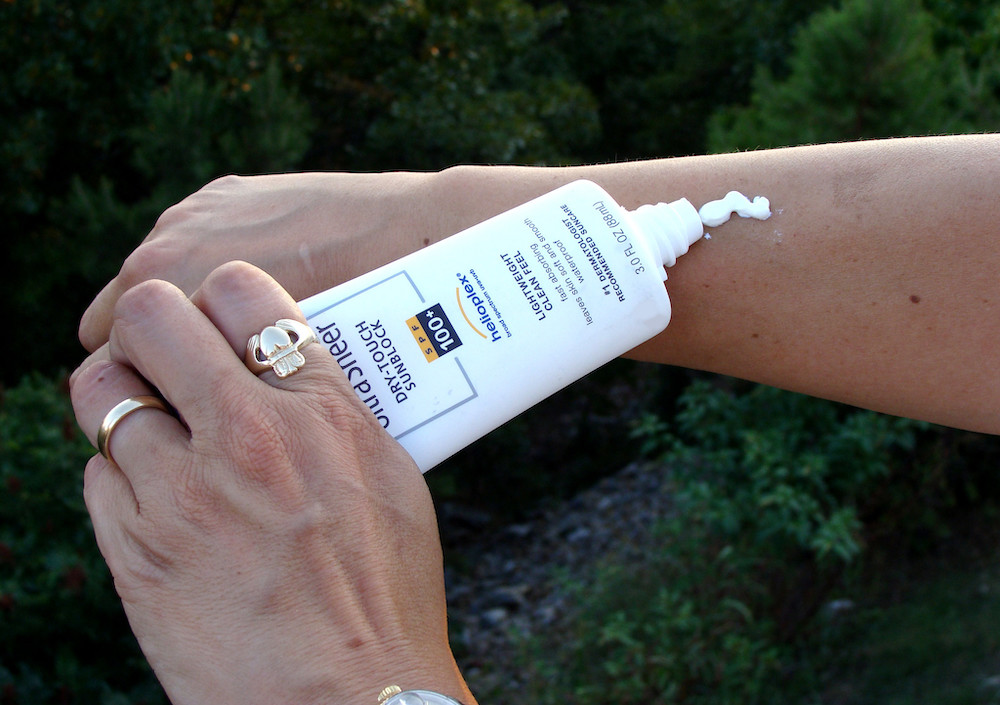LITTLE ROCK — As temperatures warm up and the school year winds down, Arkansas families are preparing to spend more time outside during the summer months. While the Natural State offers plenty of opportunities for fun in the sun, it’s important to practice sun safety by using sunscreen, avoiding prolonged sun exposure and wearing protective clothing.
Skin cancer is the biggest long-term risk from sun exposure, and it is also the most common type of cancer. According to the U.S. Centers for Disease Control and Prevention, approximately 5 million adults are treated for skin cancer each year.
There are two types of ultraviolet rays that damage skin and cause skin cancer: UV-A and UV-B rays. While UV-B rays have more energy and are a more dangerous type of UV light, individuals should protect against both types.
Choosing the right protection factor
Bryan Mader, assistant professor and health specialist for the University of Arkansas System Division of Agriculture, said it’s important to use a sunscreen that has an SPF – sun protection factor – of at least 30 and to reapply according to the manufacturer’s guidelines.
“All sunscreens are formulated a little bit differently, so the manufacturers are the ones who can best tell us how often it needs to be reapplied to provide that consistent protection,” Mader said.
The SPF number indicates how much UV radiation – that of both UV-A and UV-B rays – the sunscreen blocks. For example, Mader said a sunscreen with SPF 15 blocks about 90 percent of UV rays, while an SPF of 50 blocks about 98 percent of rays.
Mader also said it’s important to check a sunscreen’s expiration date before applying.
“Checking your sunscreen’s expiration date should be done on an annual basis, around springtime, before you begin spending lots of time outdoors, because sunscreen can expire and lose its effectiveness,” he said.
Any child older than 6 months should use sunscreen, and children younger than 6 months should be kept out of the sun and covered up with comfortable clothing.
Additional protection
No sunscreen provides complete protection from the sun, so it’s important to use additional forms of sun protection as well. Other ways of protecting against sun exposure include sunglasses with a UV protection factor; wide-brimmed hats that provide coverage of the ears, neck and top of the head – unlike a visor or baseball cap, which leaves some of these areas unprotected; and tightly-woven clothing that covers the arms and legs.
Loosely woven clothing, such as cotton t-shirts, still allows the sun to get through the fabric. Check a fabric’s sun safety by holding it up to the light. If one can see through the item, UV rays can easily penetrate the fabric and reach the skin. Dark colors or bright, saturated colors – such as vibrant reds or blues – also offer better protection than lighter shades, such as white or light pink.
Some garment makers design clothes specifically with an Ultraviolet Protection Factor (UPF) that indicates how much UV radiation can reach the skin. According to the Skin Cancer Foundation, a garment with a UPF of 30-39 offers “very good” protection, and a UPF of 50 and up rates as “excellent” protection.
The when and the where
The most effective method of sun safety is avoiding direct, prolonged sun exposure during the times when the sun’s rays are strongest and most harmful. In Arkansas, these are the hours between 10 a.m. and 4 p.m. UV rays can affect the skin even on cloudy days, and the reflectivity of surfaces can also exacerbate one’s exposure.
“The reflectivity of whatever surface you’re on can also have an effect on how intense the UV-A and UV-B rays are,” Mader said. “If you’re playing on something like grass, then it’s going to be a little better able to absorb that light and those rays, whereas if you’re on water or any light-colored surface – such as concrete or sand – it’s going to reflect from below you up to you.”
If one does get sunburned, Mader said the most important step to take is to avoid the sun for a few days afterward.
“Your body can only handle so much exposure at a time, so avoiding the sun for a few days afterwards is going to be the most important thing that you can do,” he said. “If you do have other outdoor activities to participate in after you’ve gotten a sunburn, make sure that you’re wearing a hat or wearing some protective clothing, or that you’re under a tent, or a gazebo, or an awning of some kind so you don’t continue to soak up those UV-A and UV-B rays that are damaging to our skin.”
Burn care
For relieving sunburns, aloe vera gel and other moisturizing lotions can help soothe the skin. Anti-inflammatory medications, such as ibuprofen, can also help relieve “some of that initial pain and swelling that our skin has when it’s trying to recover from a sunburn,” Mader said.
Mader said that if skin is very swollen or blistering even after spending time out of the sun, that may be an indication to contact one’s health care provider.
“If you reach that stage of a sunburn where you are blistering, or it makes you feel ill, or you’re dehydrated as a result of it – which could feel like headaches or dry mouth – all of those types of symptoms could mean that you do need to consult a healthcare provider,” he said. “But especially if, after an initial cool down period of staying out of the sun, the skin is still very swollen and dark red and blistering, that would be my indication to seek further care.”
For more information about sun safety and summer skincare, visit the Sun Safety page on the Cooperative Extension Service’s website.
To learn about extension programs in Arkansas, contact your local Cooperative Extension Service agent or visit www.uaex.uada.edu. Follow us on Twitter and Instagram at @AR_Extension. To learn more about Division of Agriculture research, visit the Arkansas Agricultural Experiment Station website: https://aaes.uark.edu. Follow on Twitter at @ArkAgResearch. To learn more about the Division of Agriculture, visit https://uada.edu/. Follow us on Twitter at @AgInArk.


